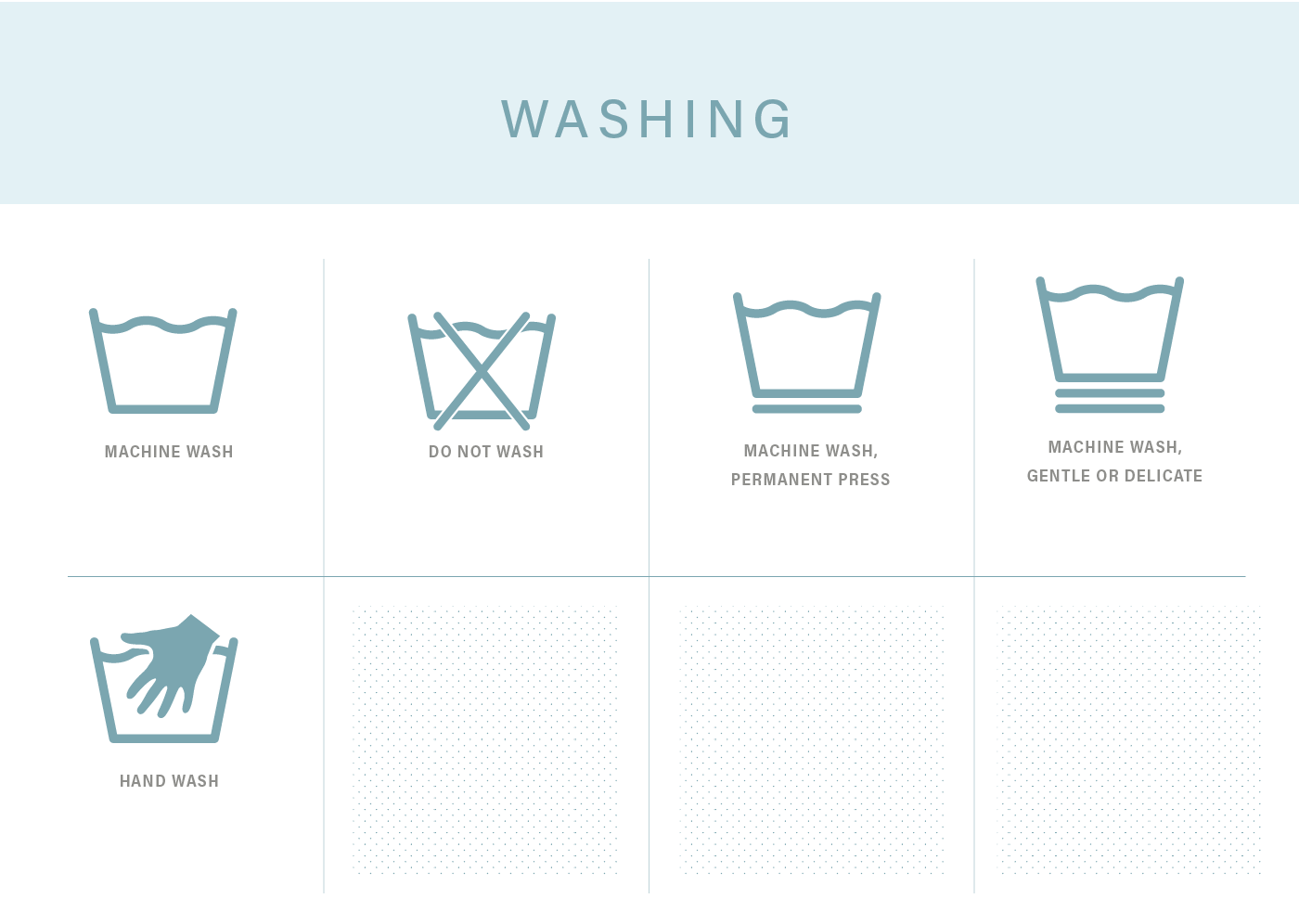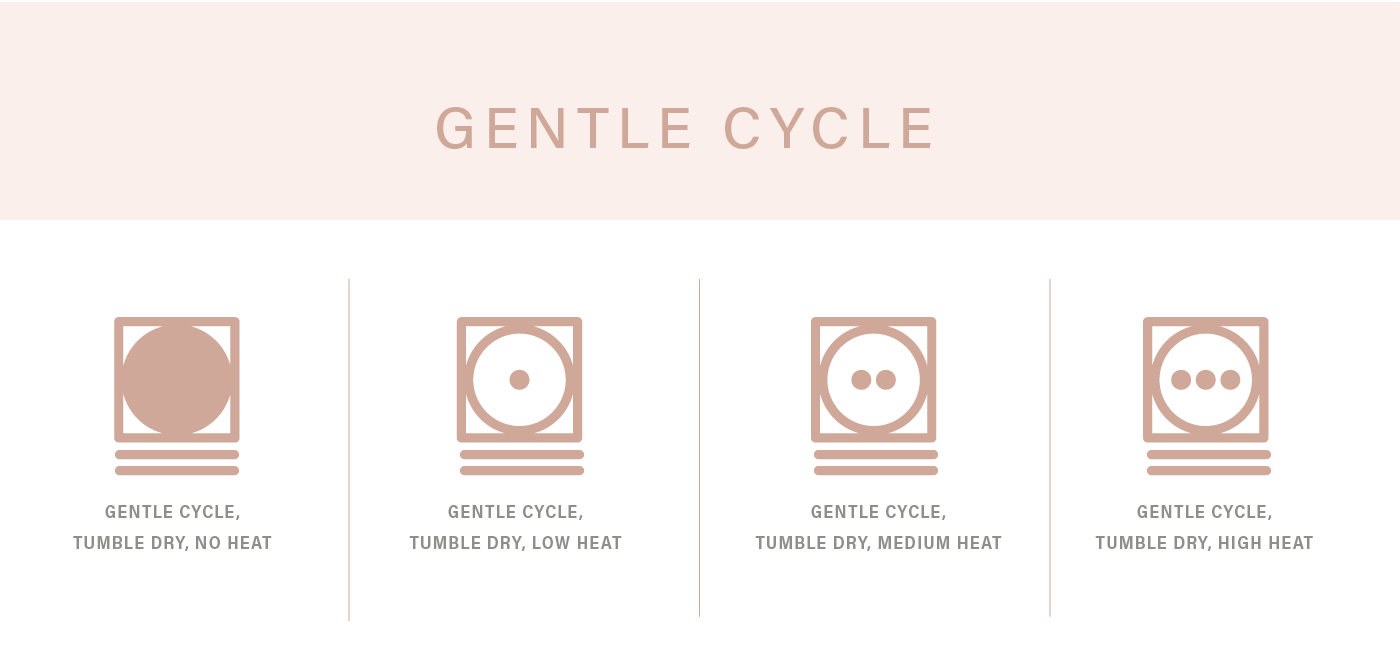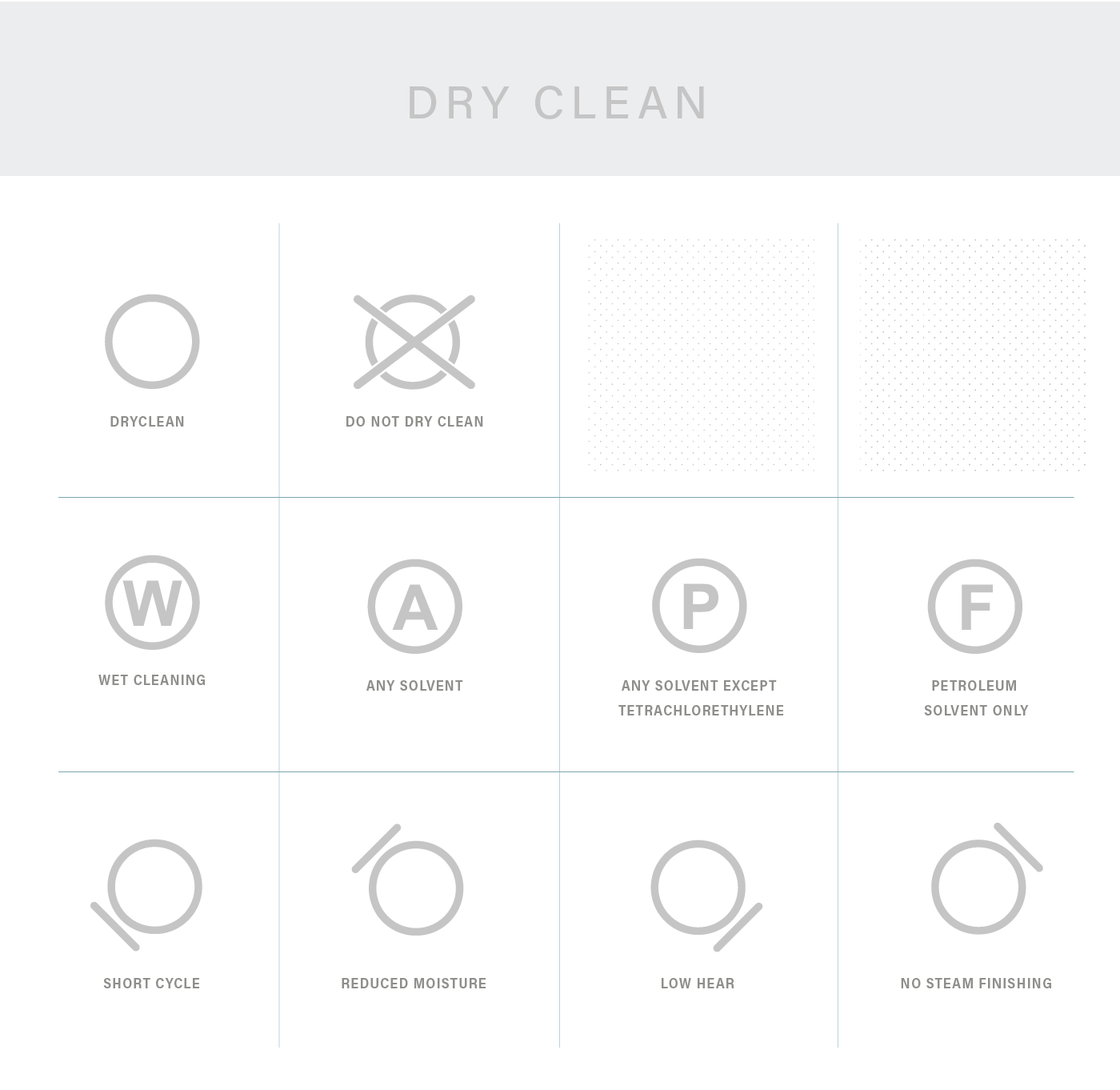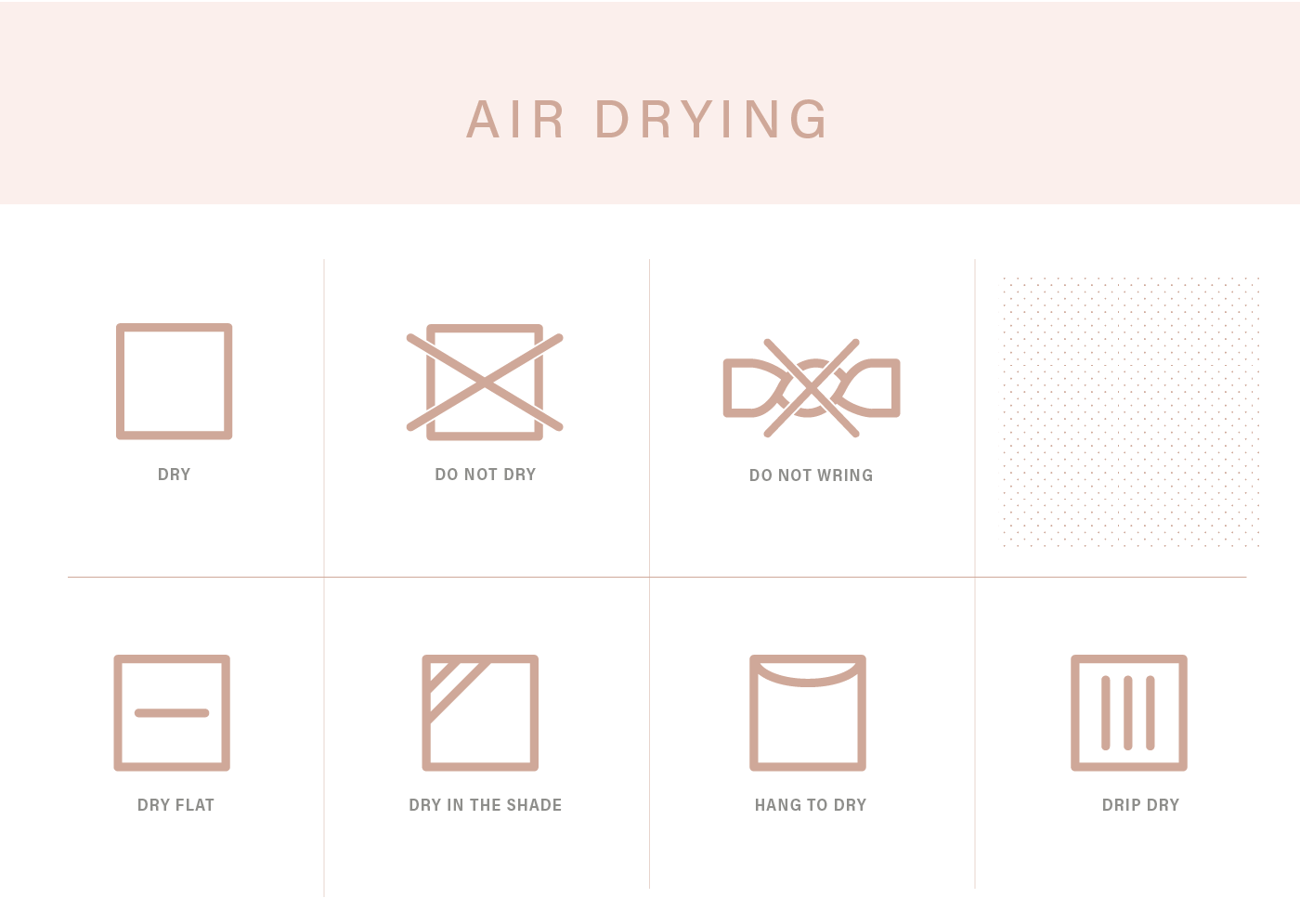"The symbols on care tags are designed to be a universally handy shortcut, but we find that many people gloss them over and look for the text instructions on the care label instead," says Lindsey Boyd, cofounder of The Laundress. "The instructions found on care tags are not necessarily the best way to clean and care for an item, but are instead a way for manufacturers to avoid getting blamed for irreparable damage when instructions aren’t followed."
It can't hurt to know what kind of cleaning your most-treasured garment requires. That way, you'll be aware of the risks involved when you (dare to) throw your silk pillow case in with the hot water load. "Understanding the laundry language is helpful for properly washing and caring for your items, otherwise you may find yourself irreparably damaging your clothing," Boyd explains.
Ready to own laundry day? Here's the secret meaning behind 53 garment tag symbols.

Washing
As we dive into the the basics of washing, I would like to congratulate you on simply picking up your laundry basket and getting started. Well done.Before you grab your detergent and get down to business, Boyd says to ask yourself: Does this really need to be washed?

{{post.sponsorText}}
"Over-washing can reduce the lifespan of fibers," she explains. The things you really, really care about—like your best pair of jeans—don't need to make a weekly voyage to the spin cycle. Try spacing out your laundry days with the help of dry shampoo for your clothes from brands like Love Home and Planet and The Laundress. (It's good for the environment and your free time.)
Take a look at your tags and make sure you're not selecting permanent press (which remove wrinkles by washing clothes in warm water and spins slowly to prevent new ones) for a sports bra that specifically requires a gentle or delicate cycle, signified by a double line beneath the cup. Don't be too worried about ruining an item in the machine though. Kelly Love, co-founder of Branch Basics, says most cleaning casualties are a result of clothes getting caught on something in the washer—not the rigor of the cycle itself. "If the washing machine has a center agitator, then I’d choose hand washing over a delicate machine cycle as the agitator can be tougher on fabrics," she says. Invest in a few lingerie bags to keep laundry emergencies to a minimum.

Heat Level
Here's the golden rule of washing temp, according to Love: "When in doubt, wash in cold as heat can damage some fabrics." If you live in a teeny-tiny apartment and rely upon the machines in your basement, you probably can't control the heat down to the very last degree. Opt for the coldest setting (especially when it comes to your most-beloved items.)

Bleaching
Ah, bleaching. The sometimes-necessary evil that has destroyed many a vibrantly hued top. But don't even think about using it on your white bed linens. Chlorine bleach reacts to residue from body oils (and sexual fluids), making white sheets yellower. If you want to cut your losses and skip bleaching altogether, non-toxic alternatives like hydrogen peroxide, oxygen bleach, or basic soap and water can make the whitest whites—but in a natural way.
“Bleach is a risky choice for several reasons," Sophie Gushée, non-toxic living pro told Well+Good. "At high enough concentrations, exposures can irritate the eyes, skin, and respiratory system. It’s also highly reactive and can easily mix with other substances to create even more toxic byproducts, she adds." So if you see one of the anti-bleach symbols on a tag, consider it a secret blessing.


Tumble Drying and Gentle Cycle
"Before drying on a heat cycle, even low heat, check for stains that didn’t come out all the way in the wash," says love. "Treat the stain again before drying as heat sets stains."
Besides locking in stains, high temperatures can cause a fitted shirt to shrink to Build-A-Bear size. Crop tops are so in right now, but they might not be the look you're going for. Just like washing cycle, colder is always (always!) a safer bet.
Air Drying
Both Love and Boyd are proponents of air drying whenever possible. Your neon tops and bright floral leggings will stay bright if you simply hang them out to dry. "Opt to hang dry any delicate garments. It’s also best to hang dry synthetic fabrics to avoid static cling," says Love. Roger that.

Dry clean
As we've previously reported, the "dry clean only" tag can often be ignored. Velvet, silk, and leather should always be taken in for cleaning, but you can get away with putting nylon, wool, polyester, and spandex in the gentle cycle. Then, hang everything up to dry. (The Laundress has a handy fabric guide full of best drying practices for each material.) If you want to be extra careful with an item, you can hand wash it instead.
Dry cleaning treatments, like bleaching, can also be fairly toxic. "Try cleaning the garment at home first and let dry cleaners be the last resort as dry cleaning chemicals are pretty nasty—harsh on your clothes and body," says Love. "See if there’s an eco-friendly, safer dry cleaning option in your area."

Ironing
Ironing has gone out of fashion in recent years. But if you're the type to carefully smooth out every last crease in a skirt, make sure you're paying close attention to the number of dots on your tags iron icon. That will tell you the temperature that's ideal for primping your outfit without burning through the fabric.
Accidentally dyed your white shirts pink? We've got the fix! Plus, why your laundry detergent might be causing breakouts.
Loading More Posts...
